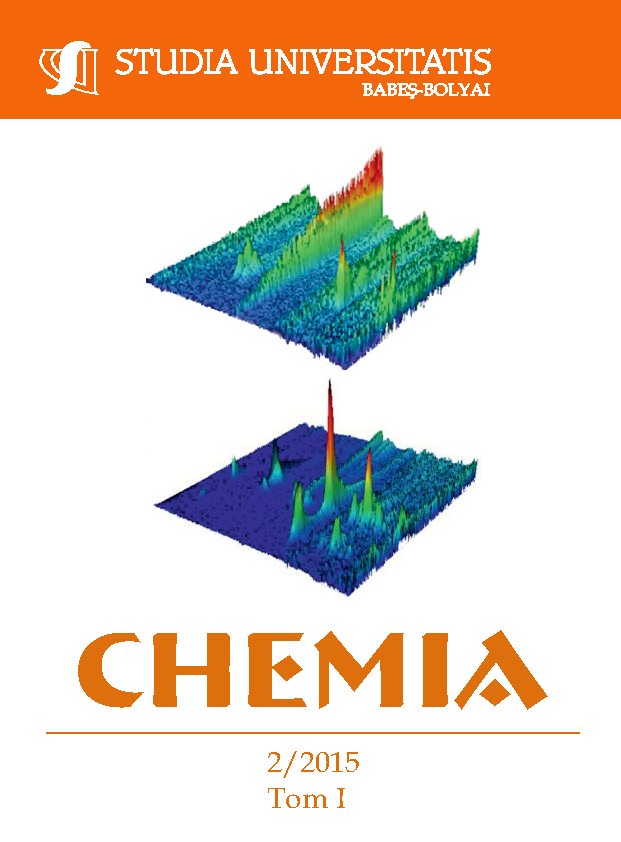GROUNDWATER CHEMISTRY RENDERING USING DUROV, PIPER AND ION BALANCE DIAGRAMS. STUDY CASE: THE NORTHERN PART OF SIBIU COUNTY
Keywords:
groundwater, chemical composition, Durov diagram, Piper diagram, ion balanced diagramAbstract
The chemical behaviours of groundwater are dynamic fields of research. Variations and changes of groundwater, as drinking water source composition impress negative effects on human health. In Romania, groundwater represents free and common fresh water. Chemistry and quality of groundwater is changed due to natural and anthropogenic factors. The aim of this study is to determine and evaluate the chemical composition of groundwater from the northern part of Sibiu County using Piper, Durov, and ion balance diagrams. The graphical representations show the type of waters based on the ion content. As results, high concentrations of major anions (SO42-, Cl-, NO2-, NO3-) and cations (Ca2+, Mg2+, Na+, K+) were found and according to Piper and ion balance diagrams, the prominent types of waters are Ca2+-HCO3- type.
References
Y. Deng, H. Li, Y. Wang, Y. Duan, Y. Gan, Procedia Earth and Planetary Science, 2014, 10, 100.
P. Ravenscroft, W.G. Burgess, K.M. Ahmed, M. Burren, J. Perrin, Hydrogeology Journal, 2005, 13, 727.
G.V. Lavrentyeva, Journal of Environmental Radioactivity, 2014, 135, 128.
J.V. Cruz, M.O. Silva, M.I. Dias, M.I. Prudencio, Applied Geochemistry, 2013, 29, 162.
A.G. Douagui, I.K. Kouame, K. Koffi, A.B.T. Goula, B. Dibi, D.L. Gone, K. Coulibaly, A.M. Seka, A.K. Kouassi, J.M. Mangoua, I. Savane, Journal of Hydro-environment Research, 2012, 6, 227.
M. Miclean, E. Levei, O. Cadar, M. Senila, I.S. Groza, Carpathian Journal of Earth and Environmental Sciences, 2013, 5 (4), 93.
D.C. Weindorf, L. Paulette, T. Man, Environmental Pollution, 2013, 182, 92.
H.A.L. Rowland, E.O. Omoregie, R. Millot, C. Jimenez, J. Mertens, C. Baciu, S.J. Hug, M. Berg, Applied Geochemistry, 2011, 26, 1.
***311 Law from 6rd June 2004 that improves and complement 458 Law from 29 July 2002 regarding the quality of drinking water. Official Gazette 2004, Part I, no. 582/30.06.2004 [In Romanian].
***Guidelines for Drinking-water Quality, Fourth Edition, World Health Organization, 2011. Online source: http://www.who.int/water_sanitation_health/publications/2011/dwq_chapters/en/.
***U.S. Environmental Protection Agency (EPA) National Primary and Secondary Drinking Water Regulations (NPDWRs and NSDWRs or secondary standards): Guidance for Nuisance Chemicals, 2006. Online sources: http://water.epa.gov/drink/contaminants/#List.
P.J.S. Kumar, Geoscience, 2013, 54, 12208.
L. Barbiero, J.P. de Queiroz Neto, G. Ciornei, A.Y. Sakamoto, B. Capellari, E. Fernandes, V. Valles, Wetlands, 2002, 3 (22), 528.
R.A. Huizar, G.T. Mendez, R.R. Madrid, Hydrological Science, 1998, 5 (43), 669.
L. Badea, M. Buza, Gh. Niculescu, M. Sandu, W. Schreiber, M. Serban, A. Kadar, “Relief units from Romania, Apuseni Mountains and Transilvaniei Plateau”. (“Unităţi de relief din România. Munţii Apuseni şi Podişul Transilvaniei”), Ars Docendi Press, Bucureşti, 2006.
F. Grecu, “Hârtibaciu hydrographic basin. Elements of morphology” (“Bazinul Hârtibaciu. Elemente de morfologie”), Academiei Press, Bucureşti, 1992.
E.D. Horhoi, “Târnava Mare channel environmental quality: a geoecological study” (“Calitatea mediului înconjurător în Culoarul Tîrnavei Mari: studiu geoecologic”), Logos 1994 Press, Oradea, 2001.
Downloads
Published
How to Cite
Issue
Section
License
Copyright (c) 2015 Studia Universitatis Babeș-Bolyai Chemia

This work is licensed under a Creative Commons Attribution-NonCommercial-NoDerivatives 4.0 International License.



